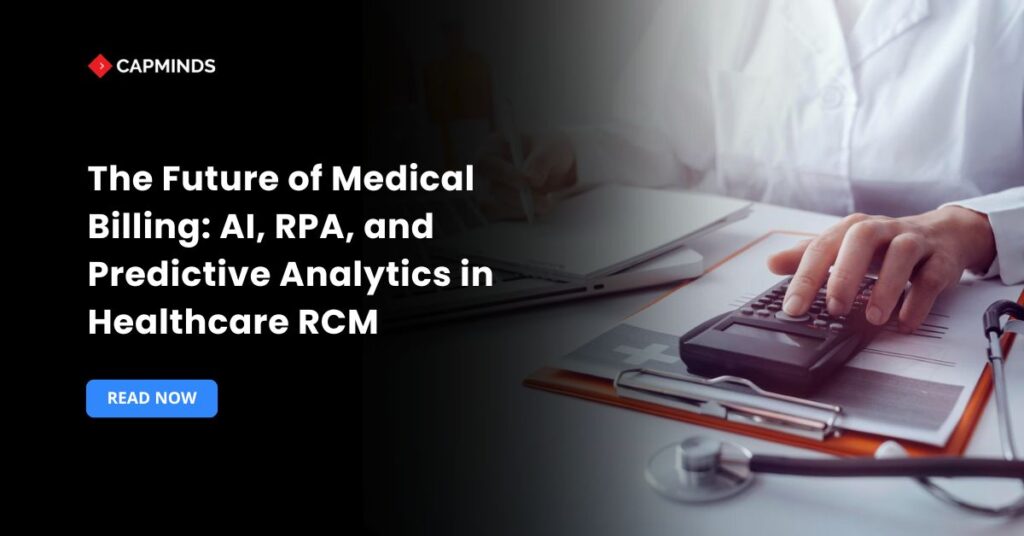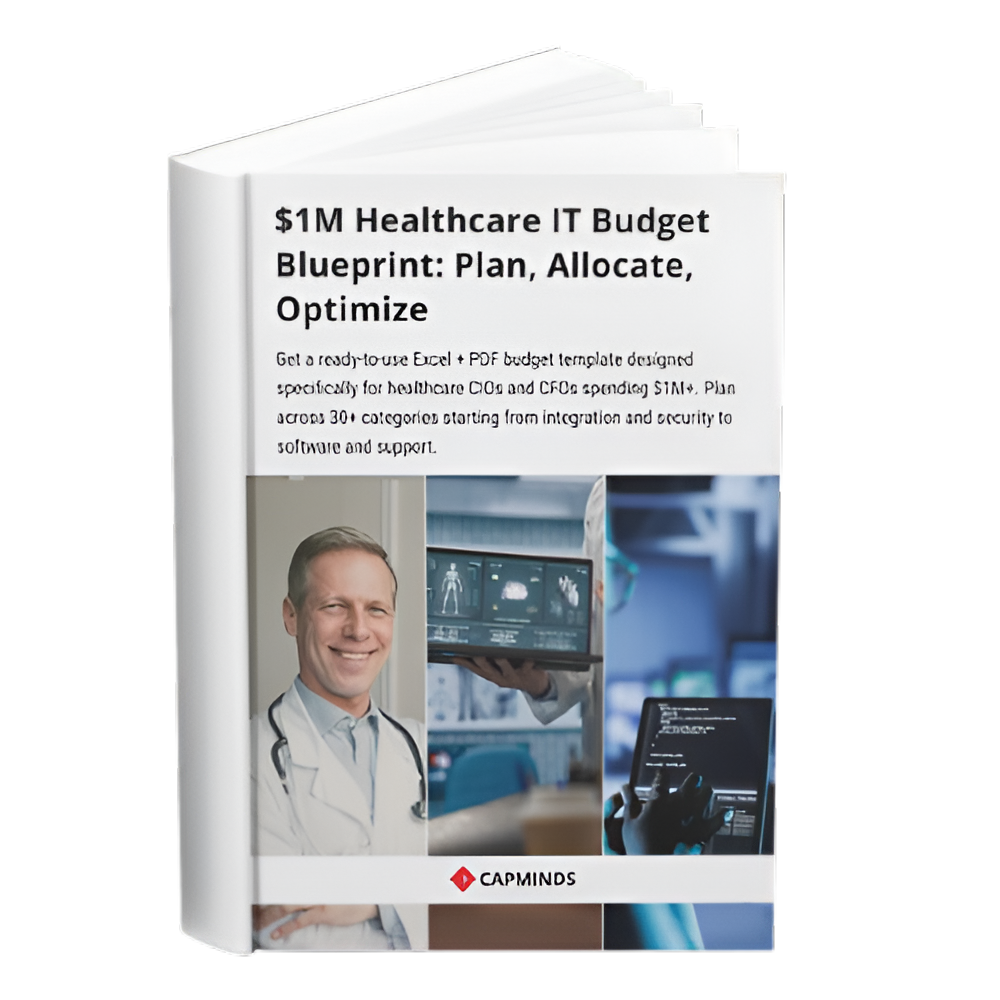The Future of Medical Billing: AI, RPA, and Predictive Analytics in Healthcare RCM
Medical billing and RCM underpin the financial stability of healthcare organizations. In today’s environment of narrow margins, evolving payer rules, and staffing shortages, traditional systems are often reactive – staff chase payments after claims are denied or delayed because of missing information. The American Hospital Association notes that almost half of hospitals and health systems already use AI in some part of their revenue cycle, and about 74 % of hospitals have automated at least part of their RCM.
Adoption is rising because the costs of inaction are high: claim denial rates increased 23 % between 2016 and 2022 due to documentation errors and payer mismatches, and revenue leakage from manual processes costs U.S. hospitals billions. This blog shares how artificial intelligence, robotic process automation, and predictive analytics are reshaping medical billing and why they are essential for future‑ready healthcare finance.
AI in Healthcare Revenue Cycle Management
1. Optimizing staff time and accuracy
Time-consuming processes, including eligibility verification, previous authorizations, and claims editing, are automated by AI systems. By automating eligibility judgments, coordinating authorizations, and identifying duplicate patient data, generative AI can free up staff members for more difficult tasks.
In the mid‑cycle, AI improves clinical documentation accuracy and reduces clinician record‑keeping time. At the back end, AI tools generate appeal letters and follow‑ups based on historical payer behavior.
Deploying an AI claims‑review tool saw a 22 % decline in prior‑authorization denials and an 18 % decrease in denials for uncovered services, saving 30–35 hours per week. Similarly, New York and Virginia hospital systems reported increased coder productivity and reductions in discharged‑not‑final‑billed cases after adopting AI‑powered coding.
2. Error detection, fraud prevention, and compliance
AI excels at detecting anomalies and preventing errors. AI can scan claims for inconsistencies, cross‑reference documents to ensure codes align with patient records, and flag non‑compliant documentation. These capabilities help reduce denial rates and prevent fraud.
AI can also simulate financial outcomes, forecast revenue, and predict claim denials, enabling proactive budgeting and resource planning. Some platforms has compliance suite embed payer‑specific rules and cross‑reference documentation with payer guidelines; this addresses the documented increase in denial rates and helps organizations achieve audit‑readiness. Real‑time AI compliance tools are therefore not only improving cash flow but also reducing regulatory risk.
Related: 7 Ways to Stretch Your $300K Medical Billing Budget With AI Automation
Robotic Process Automation in Medical Billing
1. Automating repetitive tasks
RPA is ideal for rule‑based, repetitive tasks that still consume human resources. Study notes that RPA currently automates patient data entry, eligibility verification, charge entry, claim submission, payment posting, denial management, and accounts receivable follow‑up. By eliminating manual re‑keying, RPA reduces human errors and accelerates turnaround times.
- At Global Healthcare Resource, automation delivered a 40 % increase in operational efficiency
- 25 % improvement in collections, and
- A 99% clean-claim rate and a nearly 35% decrease in denials.
Faster reimbursements and more seamless cash flow are directly correlated with those results.
2. Complementary relationship with AI
RPA’s greatest benefits come when combined with AI because it cannot manage unstructured data or complex judgments on its own. Research indicates that AI adds intelligence and flexibility by interpreting unstructured data utilizing computer vision, machine learning, and natural language processing.
As a result, AI-enabled RPA can rate payment probability, identify billing irregularities, anticipate claim denials, code medical documents on its own, and respond to patient inquiries. When combined, AI and RPA deliver:
- Automated checks reduce errors and ensure adherence to evolving billing codes.
- Bots fill staffing gaps and work around the clock.
- Predictive models and real-time dashboards maximize financial performance and cash flow.
- Staff members can concentrate on patient care and communication by delegating administrative duties.
Thus, the integration of AI and RPA results in an intelligent, agile RCM that is more patient-focused and robust.
Predictive Analytics: From Reactive to Proactive RCM
What is predictive analytics?
Predictive analytics forecasts future events using statistical algorithms, machine learning models, and historical and current data. Study describes it as a method to make informed predictions about future revenue trends, identify potential denials, and optimize processes.
Rather than reacting to denials, predictive analytics helps organizations anticipate cash‑flow fluctuations, seasonal patterns, and policy changes. This proactive stance leads to more accurate budgets, stable revenue, and fewer unpleasant surprises.
Key applications
Predictive analytics plays several critical roles in medical billing:
- Revenue forecasting: analyzing patient demographics, insurance mix, and historical payments to project cash‑flow fluctuations.
- Denial prediction: modeling thousands of past claims to flag high‑risk claims before submission and identify patients likely to default.
- Optimization of processes: prioritizing collections based on patients’ propensity to pay and highlighting denial patterns to correct errors before submission.
- Patient payment scoring: increasing cash flow, enhancing collections, and rating the likelihood of patient payments.
- Risk detection and scenario planning: AI-powered systems use data from demographics, insurance, claims, and payment trends to predict future collections and reimbursement rates as well as identify risks like late payments, incorrect documentation, or changing market conditions.
- Dynamic adjustments: Predictive models adapt forecasts in response to shifts in patient behavior or payer policy by continuously learning from fresh data.
Fraud Detection and Compliance
Fraud and noncompliance become costly hazards as billing standards get more complicated. AI algorithms can examine billing trends and spot irregularities that can point to fraud or straightforward mistakes. Also, predictive analytics forecasts revenue based on anticipated claims processing and predicts denials, simulating financial outcomes.
In order to reduce claim denials early on, AI-driven compliance technology cross-references documents with payer rules. Real-time compliance technologies ensure that billing complies with payer requirements and lower the risk of fines and audits by keeping up with changing rules.
Challenges and Considerations
1. Data quality and governance
AI and predictive analytics are only as accurate as the data they receive. Global Healthcare Resource warns that poor data quality leads to poor workflows and outputs and recommends investing in data governance and quality control. MedSys Group similarly emphasizes the need for clean, organized data from electronic medical records and billing systems as the foundation for analytics.
2. Workforce adaptation and change management
Upskilling current employees and managing change are essential for the successful implementation of AI and RPA. Teams in charge of finance and RCM should be trained to analyze data, begin with pilot programs, and then progressively expand. Global Healthcare Resource advocates for a staged rollout and user-friendly solutions, noting that a lack of RPA and AI knowledge can hinder progress.
3. Privacy, bias, and ethics
Strong security and moral precautions are required while handling sensitive patient data. Compliance frameworks, audit trails, and encryption all contribute to privacy protection.
The AHA emphasizes the relevance of human validation to avoid closed-loop automation and stresses the significance of setting guardrails in data architecture to eliminate bias and unfair impacts. Sustaining confidence requires regular audits and transparent algorithms.
Future Trends Shaping the Healthcare RCM
1. AI‑augmented workforce and end‑to‑end automation
Within two to five years, experts predict that generative AI will advance from managing straightforward jobs like prior authorizations and appeals to addressing more intricate areas of the revenue cycle.
Instead of handling manual activities, RCM teams will become analytics-driven organizations that handle exceptions and strategic choices. End‑to‑end automation will span patient registration to claim adjudication, with bots guiding processes and escalating exceptions.
2. Intelligent chatbots and personalized patient experiences
RPA and AI will power intelligent chatbots that offer self‑service portals, automated billing support, and payment plan negotiation.
These tools will personalize communications based on payment history, increasing patient satisfaction and reducing collection times. Moreover, socioeconomic determinants of health will be incorporated into predictive models in the future, allowing for customized financial advising.
3. Advanced analytics, interoperability, and new technologies
In order to improve data security and transparency, future predictive analytics platforms will use blockchain technology and provide real-time insights through cloud-based dashboards.
AI technologies will improve data interchange and forecast accuracy by seamlessly integrating with other health IT systems, including electronic health records. AI will continue to aggregate data across patient demographics, claims history, and payment patterns, while dynamic models adjust to new payer policies and market conditions.
Transform Your Revenue Cycle with CapMinds’ Healthcare RCM Services
At CapMinds, we empower healthcare organizations to achieve financial excellence through next-generation Revenue Cycle Management services.
Our end-to-end digital health solutions seamlessly integrate AI, Robotic Process Automation, and Predictive Analytics to optimize accuracy, compliance, and profitability.
Partnering with CapMinds means moving from reactive to proactive financial operations. Our tailored services deliver:
- Automate claim reviews, reduce denials, and enhance clinical documentation accuracy.
- Streamline charge entry, payment posting, and denial management for faster reimbursements.
- Forecast revenue trends, detect fraud, and mitigate risks before they impact your bottom line.
- Ensure audit readiness with intelligent, rule-based automation.
Experience the future of medical billing with CapMinds’ comprehensive digital health tech services, transforming revenue cycles, maximizing performance, and driving sustainable growth.
Partner with CapMinds, where innovation meets precision in healthcare services.




